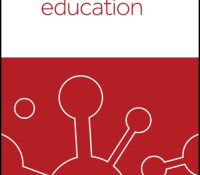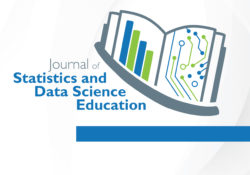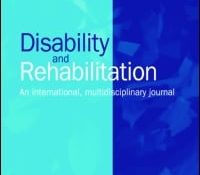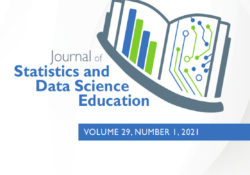tandfonline.com har udgivet en rapport under søgningen “Teacher Education Mathematics”: Combining statistical and machine learning methods to explore German students’ attitudes towards ICT in PISA Link til kilde
Like this:
Like Loading...

tandfonline.com har udgivet en rapport under søgningen “Teacher Education Mathematics”: Abstract Abstract Collaborative work is inherent to being a statistician or data scientist, yet opportunities for training and exposure to real-world scenarios are often only a small part of a student’s academic program. Resources to facilitate effective and meaningful instruction in communication and collaboration are limited, particularly when compared to the abundant resources available to support traditional statistical training in theory and methods. Our work helps fill the need for resources by providing ten modern, freely-available videos of mock collaborative interactions, with supporting discussion questions, scripts, and other resources. Videos are particularly helpful for teaching communication dynamics. These videos are set in the context of academic research discussions, though the scenarios are broad enough to facilitate discussions for other collaborative… Continue Reading →
Like this:
Like Loading...
tandfonline.com har udgivet en rapport under søgningen “Teacher Education Mathematics”: Abstract Abstract The novel coronavirus has forced the world to interact with data visualizations in order to make decisions at the individual level that have, sometimes, grave consequences. As a result, the lack of statistical literacy among the general public, as well as organizations that have a responsibility to share accurate, clear, and timely information with the general public, has resulted in widespread (mis)representations and (mis)interpretations. In this article, we showcase examples of how data related to the COVID-19 pandemic has been (mis)represented in the media and by governmental agencies and discuss plausible reasons why it has been (mis)represented. We then build on these examples to draw connections to how they could be used to enhance statistics teaching and learning,… Continue Reading →
Like this:
Like Loading...
tandfonline.com har udgivet en rapport under søgningen “Teacher Education Mathematics”: ABSTRACT ABSTRACT The purpose of this research is to investigate prospective teachers’ learning in the statistical modeling process. To reach this goal, we position the study in a socio-critical perspective of modeling that informed the design of a statistical investigation. Participants were 10 prospective teachers from a state university in northwestern Colombia who were taking a methods course in statistics. They worked out a statistical investigation inspired by a news article on global warming. The main source of data was fragments from prospective teachers’ speech while working out the statistical investigation. The information was complemented with prospective teachers’ narratives in which they reflected on their experience with statistics. The results reveal that the prospective teachers’ discourse offers indications to suggest… Continue Reading →
Like this:
Like Loading...

tandfonline.com har udgivet en rapport under søgningen “Teacher Education Mathematics”: Abstract Formulae display:?Mathematical formulae have been encoded as MathML and are displayed in this HTML version using MathJax in order to improve their display. Uncheck the box to turn MathJax off. This feature requires Javascript. Click on a formula to zoom. Abstract Statistical modeling continues to gain prominence in the secondary curriculum, and recent recommendations to emphasize data science and computational thinking may soon position algorithmic models into the school curriculum. Many teachers’ preparation for and experiences teaching statistical modeling have focused on probabilistic models. Subsequently, much of the research literature related to the teachers’ understanding has focused on probabilistic models. This study explores the extent to which secondary statistics teachers appear to understand ideas of statistical modeling, specifically the… Continue Reading →
Like this:
Like Loading...
eric.ed.gov har udgivet: This publication compares first-generation students (i.e., those whose parents have no more than a high school education) with their peers whose parent or parents attended college. It focuses on mathematics course taking–the effectiveness of taking algebra in 8th grade and advanced math courses in high school for subsequent college enrollment–and planning strategies students used to prepare for college. The report also examines the involvement of students’ parents, teachers, and other “institutional agents” capable of helping them prepare for college. The results of the study offer both negative and positive findings concerning the experiences of first-generation students. On the negative side, even after controlling for measures of academic achievement, family income, family structure (single versus two parents), and other related characteristics, first-generation students were less likely than their… Continue Reading →
Like this:
Like Loading...
tandfonline.com har udgivet en rapport under søgningen “Teacher Education Mathematics”: The utility of the International Classification of Functioning construct as a statistical tool – operationalizing mental health as an indicator of adolescent participation Link til kilde
Like this:
Like Loading...
tandfonline.com har udgivet en rapport under søgningen “Teacher Education Mathematics”: Abstract Formulae display:?Mathematical formulae have been encoded as MathML and are displayed in this HTML version using MathJax in order to improve their display. Uncheck the box to turn MathJax off. This feature requires Javascript. Click on a formula to zoom. Abstract Although statistical literacy has become a key competence in today’s data-driven society, it is usually not a part of statistics education. To address this issue, we propose an innovative concept for a conference-like seminar on the topic of statistical literacy. This seminar draws attention to the relevance and importance of statistical literacy, and moreover, students are made aware of the process of science communication and are introduced to the peer review process for the assessment of scientific papers.… Continue Reading →
Like this:
Like Loading...

tandfonline.com har udgivet en rapport under søgningen “Teacher Education Mathematics”: Abstract Abstract Motivated by experience with students’ psychological barriers to learning statistics, we modified and extended the Statistical Anxiety Rating Scale (STARS) to develop a contemporary and valid (face, content, criterion and construct) Danish measure of attitudes and relationship towards statistics for use with higher education students taking statistics within another discipline. Two subscales were excluded because of lack of conceptual unidimensionality or derogatory content, and single items were modified for face and content validity enhancement in the remaining subscales. Following a pilot study and main study, the resulting 26-item Danish instrument (HFS-R for “holdninger og forhold til statistik – Revideret”, in English “Attitudes and Relationship to Statistics – Revised”) consists of four subscales: Test and Class Anxiety (TCA), Interpretation… Continue Reading →
Like this:
Like Loading...

tandfonline.com har udgivet en rapport under søgningen “Teacher Education Mathematics”: Abstract Abstract The statistical problem-solving process is key to the statistics curriculum at the school level, post-secondary, and in statistical practice. The process has four main components: formulate questions, collect data, analyze data, and interpret results. The Pre-K-12 Guidelines for Assessment and Instruction in Statistics Education (GAISE) emphasizes the importance of distinguishing between a question that anticipates a deterministic answer and a question that anticipates an answer based on data that will vary, referred to as a statistical question. This article expands upon the Pre-K-12 GAISE distinction of a statistical question by addressing and identifying the different types of statistical questions used across the four components of the statistical problem-solving process and the importance of interrogating these different statistical question… Continue Reading →
Like this:
Like Loading...








